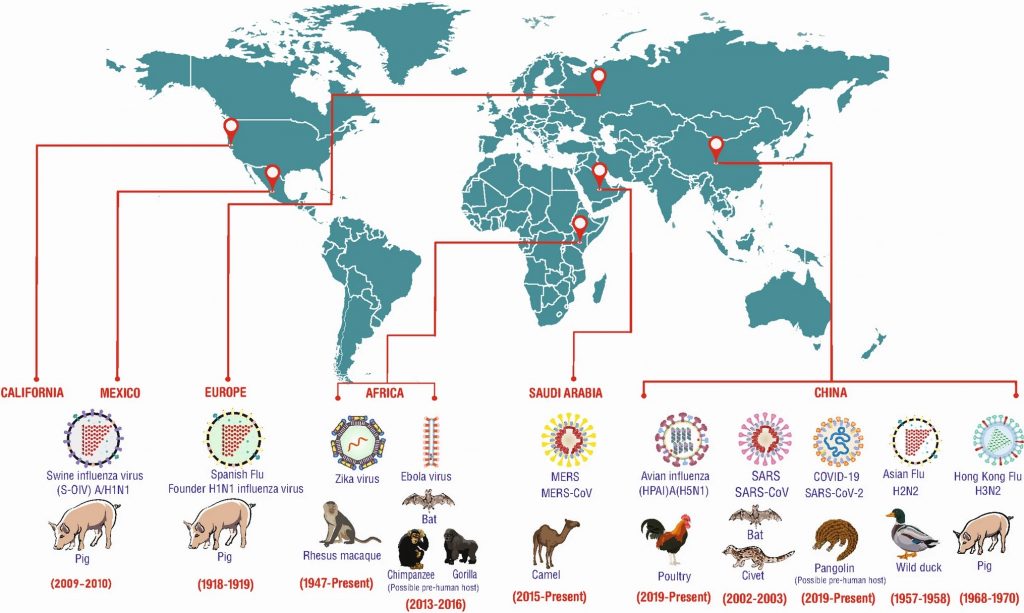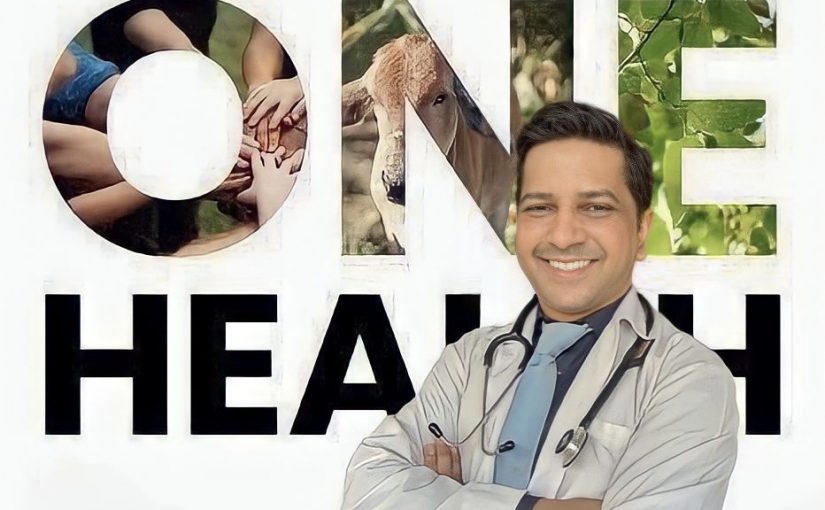In the light of the health priorities set by G-20 delegates the goanobserver.in spoke to DR AMIT DIAS of the Department of Preventive Medicine, Goa Medical College, to get a better understanding of why we need to be concerned about zoonotic diseases and the “One Health” approach…
Over the last century the world has witnessed the emergence of numerous zoonotic diseases that have resulted in sickness and death. In the recently concluded meeting on health at the G-20 summit in the state of Goa, there was a lot of emphasis on the need to improve the surveillance system for zoonotic disease with a focus on strengthening the ‘One Health’ approach and initiating a faster response to prevent global health emergencies from disrupting the world.
Q: What is Zoonosis?
A: Zoonosis is a natural infection that is transmissible from vertebrate animals to humans or from humans to animals. The term is derived from the greek word ‘zoon’ which means animal and ‘nosis’ which means illness. There are over 200 known types of zoonosis. Diseases such as Rabies, Japanese encephalitis, Bird flu, avian influenza, H1N1, H7N9, monkeypox, Ebola, SARS, and COVID-19 are all zoonotic diseases. Zoonotic diseases are caused by harmful organisms like viruses, bacteria, parasites, and fungi.
Q: How do zoonotic diseases spread?
A: There are various routes to the spread of zoonosis. Rabies for instance is spread via animal bite or scratch. Contact with saliva, blood, urine, mucous, feces, or other body fluids of an infected animal could be dangerous. It can also spread by Indirect contact like coming into contact with areas where animals live and roam, or objects or surfaces that have been contaminated with germs. In South America, people who visited the caves where the Rabies infected bats live, acquired rabies due to aerosol (airborne) spread. Certain zoonotic diseases can also spread by vectors such as mosquitoes (Japanese Encephalitis) or ticks (Kysnur Forest Disease- KFD), and fleas (Plague). It can also spread via food (for example salmonella from contaminated meat or eggs)’ Drinking or coming in contact with water that has been contaminated with feces from an infected animal can also spread zoonotic diseases example – cryptosporidium, E. coli, etc.
Q: What is the magnitude and impact of zoonotic diseases in the world?
A: According to an estimate by the WHO, one billion cases and over one million deaths occur annually due to zoonosis around the world. 60% of infectious diseases that spread to humans are from animals and 75% of the newly emerging infectious diseases are zoonosis. COVID-19 is an example of a zoonotic disease that brought the whole world to a standstill. Outbreaks can have far-reaching repercussions on health, tourism, commerce, and consumer confidence. The impact that each of these diseases has on the economy can be devastating. For example, the SARS pandemic in 2003 cost the world economy over USD 50 billion on account of medical treatment and loss of revenue associated with the halt in tourism. The impact caused by the recent COVID-19 pandemic is unimaginable. These diseases have to be nipped in the bud and a good surveillance system that detects them early and enforces immediate corrective measures is necessary.

Q: What are the causes for the rising number of zoonotic diseases?
A: Humans are destroying the environment leading to an imbalance in the ecosystem- the closer we get to the animals, the closer we get to the diseases that they suffer. Widespread deforestation, illegal and poorly regulated wildlife trade, encroachments of forests, climate change, vector density, intensified agriculture and livestock production, and antibiotic resistance all contribute to the emergence of zoonotic diseases. Globalization has resulted in the increased transfer of people, animals, and goods across national borders, which has fuelled the global spread of zoonotic infections.
Q: Can we get infections from our pets?
A: Yes, one can get infections from your pet and therefore one needs to take care. It does not mean, one should not keep pets. For an animal to give you an infection it has to get infected in the first place. Protecting the animal from the disease, for example, vaccinating them against Rabies will help you stay safe.
Q: What should one do to prevent zoonotic diseases?
A: Prevention would depend on the disease concerned and the route of transmission. In general, as we learned during the COVID-19 Pandemic, washing hands with soap is one of the simplest and most important steps. Always wash your hands after being around animals, even if you didn’t touch the animals. Prevent bites from vectors such as mosquitoes, ticks, and fleas. Handle meat and food safely—whether it’s for yourself or your family, your pet, or other animals. Avoid bites and scratches from animals. Take appropriate vaccines such as the anti-rabies vaccine, JE Vaccine, etc. Keep the pets safe. At a policy level, it requires a sincere coordinated ‘one health’ approach.
Q: What is the ‘ONE HEALTH’ concept for Zoonosis?
A: The One Health concept is an integrated, multisectoral, unifying approach that aims to balance and optimize the health of people, animals, and ecosystems. It recognizes the fact that the health of humans, domestic and wild animals, and their wider environment are linked and interdependent. We need to have a collaborative and well-coordinated approach to understand the ecology of each of the zoonotic diseases and develop a plan for rapid response and control.
